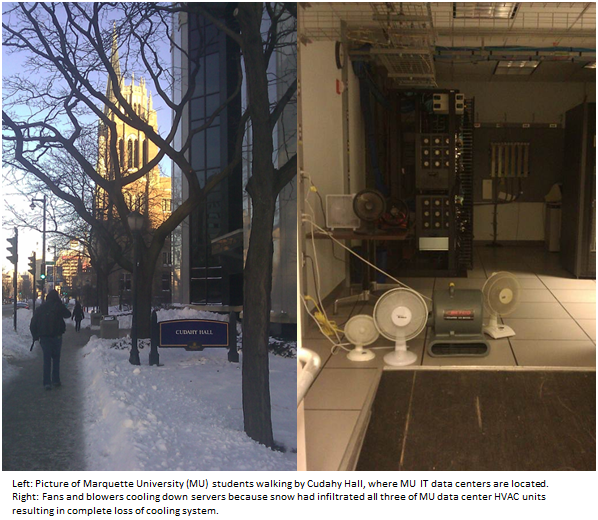The Sky Falls, the Ground Shakes, but Lync Keeps People Connected
In this blog post, I want to talk about how, when nature disrupts our lives, technology can help us keep things going. A couple of years ago in Seattle, where I live, our city shut down when it was hit by a powerful snowstorm. Because I had Office Communicator (now Lync with the 2010 release) I was able to conduct meetings and stay productive through it all. That’s something I have in common with a few customers and fellow Microsoft employees who recently have started sharing back to us their stories of business continuity in the midst of natural disasters. This winter, much of the United States has experienced record snowfall. And in January, Queensland, a state in the northeast corner of Australia, endured serious flooding, followed by a powerful cyclone. Technology in general—and Lync specifically—has enabled our customers and employees to keep business critical systems and processes up and running through the chaos, but more importantly, it has helped them stay connected to the outside world.
Let me share a few stories with you that illustrate how Lync helped people maintain business continuity and solve critical problems during times of crises:
- Marquette University. Located in Milwaukee, Wisconsin, Marquette University experienced serious blizzard conditions in January 2011. After 12 inches of snow fell in record time, snow infiltrated the HVAC units at the university’s data center and caused temperatures to rise to critical levels inside. When they realized they needed to begin shutting down equipment, they chose to keep their Lync Server up to maintain communication, as many IT team members were snowed in at locations around the region. “We were able to hold a five-hour conference call through Lync,” explains Danny Smith, Director of IT at Marquette. “We worked together through shutting down, restarting, and testing critical systems. Luckily we were able to keep a few critical systems up – one being Lync. We would have had a much harder time coordinating this effort without Lync.” Under normal operating conditions, Marquette has experienced a 50 percent reduction in its telephony costs and simplified administration—without sacrificing critical availability.

- Microsoft Australia. Queensland was devastated by flooding in January 2011, with 75 percent of the state declared a natural disaster zone. The Microsoft office in Queensland, Australia was one of the first buildings to go under, and the staff was sent home. Because of Lync, the staff in Queensland stayed in touch with their colleagues and customers around the world—and to hang on to a bit of normalcy that can help keep up people’s spirits in difficult times. Many customers could only use their mobile phones—their traditional desk phones didn’t work because the PBX systems were inaccessible—so Lync provided a critical connection. “More than a month later, our building is still closed—but we have continues to operate through it all due to Lync,” says John Smith, Technical Sales Professional at Microsoft. “We also had partners who relied on Lync 2010 to extend a helping hand to customers during and after the flood and to enable its staff to continue working on projects from their homes while the offices are closed.”
- Microsoft U.S., Dallas. In addition to welcoming close to 200,000 people to town for the Super Bowl in early February, Dallas also welcomed almost half a foot of snow—which, in an area unused to dealing with such weather, might as well be the equivalent of several feet. The storm taxed regional utility companies, who were forced to implement rolling blackouts. The office there supports about 3,000 people—who were encouraged to stay home. “Managers told us to use the technology. So while my kids were watching movies and playing video games, I used Lync to hold 38 virtual meetings over three days,” says Chris Jennings, Technical Sales Professional at Microsoft. “Because the office was closed for three days, it could have easily cost us millions of dollars in unproductive workers’ time. With Lync in place, we were able to keep business up and running. It pays for itself.”
In all of these cases, technology helped keep business-critical systems up and running. More importantly, though, as long as people could access the Internet or some source of wireless infrastructure and power, Lync helped keep people connected to each other through the crises. I like these stories because they show how we can make solutions like Lync work for us even in the worst circumstances: to help us reach out to our customers, team mates, family and friends, and to keep us focused on the routine, everyday things that help us rebuild.
Kind regards,
Rainer Podjoutomo
Product Manager, Microsoft Lync